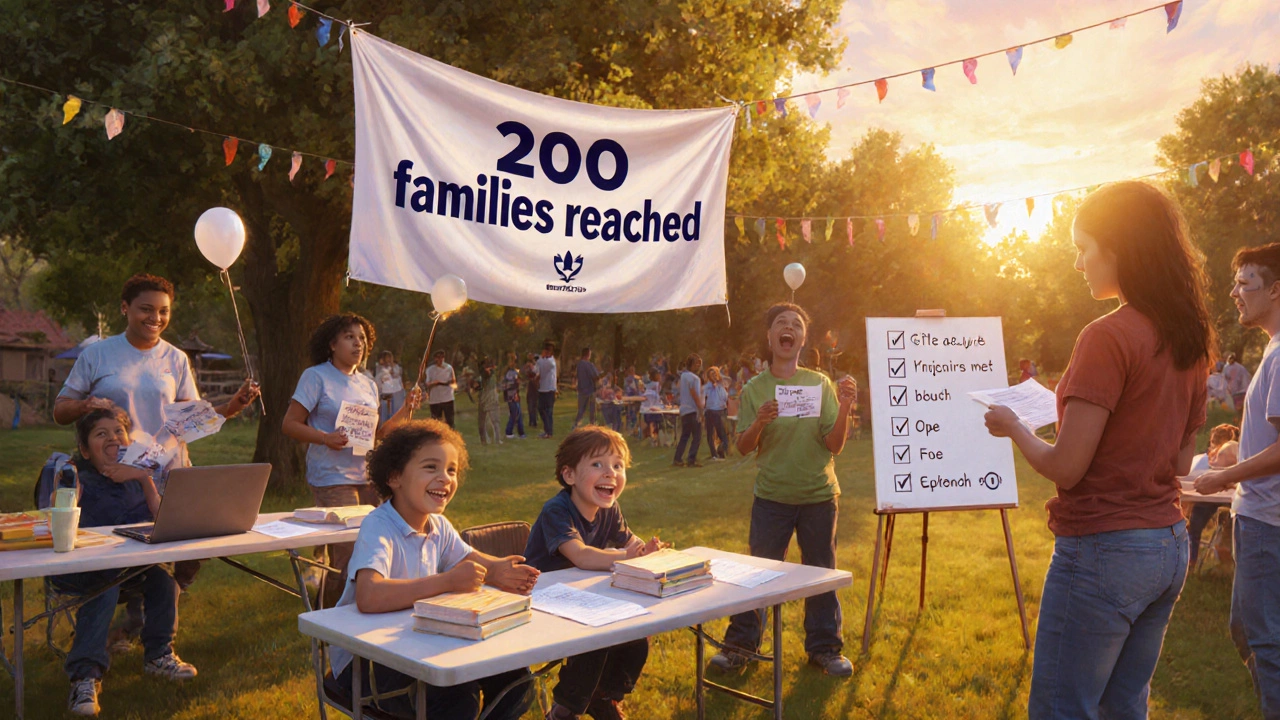When you talk about Outreach Plan is a structured roadmap that guides how an organization connects with a target community, shares its message, and achieves specific impact goals, you’re setting the stage for everything else. A solid plan helps you avoid wasted effort, keeps volunteers on the same page, and makes it easier to show donors that their money is doing real work.
Why a clear outreach plan matters
Without a plan, outreach becomes a series of guess‑and‑check actions. You might end up shouting at the wrong crowd or spending money on tools that don’t move the needle. A well‑crafted plan answers three questions before you invest time or cash: Who are you trying to reach? What do you want them to do? How will you know you succeeded?
Step 1: Define purpose and set SMART Goals as Specific, Measurable, Achievable, Relevant, and Time‑bound objectives that turn a vague vision into concrete targets
Start by writing a one‑sentence purpose statement. Example: “Connect 200 local families with free after‑school tutoring by the end of the school year.” Then break that down into SMART pieces - e.g., “Enroll 50 families per month, track attendance weekly, and report progress at quarterly board meetings.” When goals are SMART, every later decision can be measured against them.
Step 2: Identify your audience with Stakeholder Analysis as a systematic look at who influences or is affected by your outreach and what they need from you
List primary groups (parents, local schools, sponsors) and secondary groups (media, neighboring NGOs). For each, note their interests, preferred communication style, and level of influence. A quick matrix helps you see who needs a personal call, who will respond to a flyer, and who might become a champion.
Step 3: Choose the right Communication Channels as the platforms and tools you’ll use to deliver your message and interact with the community
Not every channel works for every audience. Below is a quick comparison to help you decide which mix fits your goals.
| Channel | Typical Reach | Cost | Engagement Level | Best Use |
|---|---|---|---|---|
| Social Media (Facebook, Instagram) | High - many local users | Low - organic posts | Medium - likes/comments | Raise awareness quickly |
| Email Newsletter | Medium - opt‑in list | Low - platform fees | High - direct opens/clicks | Send detailed updates |
| In‑Person Events | Low‑Medium - location limited | Medium - venue, supplies | High - face‑to‑face interaction | Build trust and collect sign‑ups |
| Local Media (community paper, radio) | Medium - community readers/listeners | Low‑Medium - ad or PR | Low‑Medium - one‑way exposure | Legitimize your effort |
Pick at least two channels that together cover both breadth (reach) and depth (engagement). Align each channel with a specific audience from your stakeholder analysis.
Step 4: Set a realistic budget and allocate resources
Break costs into categories: advertising, printing, venue hire, software tools, and volunteer expenses (e.g., travel reimbursements). Then match each cost to a responsible team member. If money is tight, consider in‑kind donations - a local printer might offer free flyers in exchange for a thank‑you mention.
Step 5: Build a timeline and assign tasks
Use a simple Gantt or a shared Google Sheet. Mark key milestones: research, content creation, channel launch, mid‑campaign check‑in, final evaluation. Assign owners for each task - for example, “Jane will design flyers,” “Tom will schedule community talks.” Clear deadlines keep volunteers accountable and help you spot bottlenecks early.
Step 6: Craft clear messages and supporting materials
Every piece of communication should echo the purpose statement and the SMART goals. Keep language plain, add a call‑to‑action (CTA) like “Register for a free tutoring slot today,” and include contact details. Visuals matter - a bright flyer with a single photo of a smiling child does more than a text‑heavy brochure.

Step 7: Launch, monitor, and adjust on the fly
When you go live, track the metrics you defined in the next step. For social media, watch impressions and click‑through rates. For events, record attendance and sign‑up forms. If a channel underperforms, reallocate effort to the one that’s generating results.
Step 8: Evaluate impact with Evaluation Metrics as quantitative and qualitative indicators that show whether your outreach met its SMART goals
At the campaign’s end, compare actual numbers to targets: did you enroll 200 families? How many volunteers stayed on board? Conduct a short survey to capture feedback - this is where Feedback Loop as a process for collecting, analyzing, and acting on community responses becomes vital. Summarize findings in a one‑page report for donors and for the next round of planning.
Quick checklist before you start
- Write a one‑sentence purpose statement.
- Set at least three SMART goals.
- Complete a stakeholder analysis matrix.
- Select 2‑3 communication channels and justify each choice.
- Draft a budget with line items and owners.
- Build a timeline with clear milestones.
- Create message templates and visual assets.
- Define the evaluation metrics you’ll track.
Frequently Asked Questions
How long should an outreach plan take to create?
A basic plan can be drafted in one week if you already have a clear purpose. More complex initiatives, especially those involving multiple partners, often need 3‑4 weeks for research, stakeholder input, and budgeting.
Do I really need a formal stakeholder analysis?
Yes. Even a simple table that lists each group’s interests and preferred contact method prevents you from wasting time on channels that don’t reach them.
What’s the best way to measure community impact?
Combine quantitative data (e.g., number of participants, attendance rates) with qualitative feedback (surveys, testimonials). The mix gives donors a clear picture and helps you refine future outreach.
Can I reuse an outreach plan for different projects?
Absolutely. Keep the core structure (purpose, SMART goals, stakeholder matrix) and swap out the specifics - audience, channels, and metrics - to fit each new initiative.
How often should I update my outreach plan?
Review it after every major milestone or at least quarterly. If you notice a channel losing traction or a new community need emerging, adjust the plan quickly.
With a solid outreach plan in hand, you’ll move from scattered effort to focused impact, making it easier to attract volunteers, secure funding, and, most importantly, serve the community you care about.
